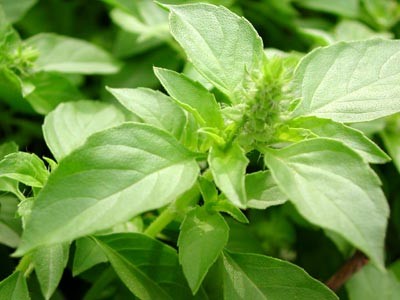
Common Name: Tulsi
English Name: Holy Basil
Botanical Name: Ocimum sanctum Linn.
Family: Labiatae
Description: Ocimum sanctum, or holy basil, is an aromatic plant that is native to the tropics of Asia and Africa, and is widespread as a cultivated plant and weed. It is a small shrub with many branches and strongly scented green leaves. The leaves are ovate and slightly toothed. The flowers are purplish to white. There are two main types grown in India, green-leaved holy basil (Sri Tulsi) and purple-leaved holy basil (Krishna Tulsi).
Chemical Constituents: The phytoconstituents isolated from various parts of the plant include eugenol, cardinene, cubenol, borneol, linoleic acid, linolenic acid, oleic acid, palmitric acid,steric acid, Vallinin, Vicenin, Vitexin, Vllinin acid, Orientin, Circineol, Gallic Acid.
Properties: Recommended for the treatment of bronchitis, bronchial asthma, malaria, diarrhea, dysentery, skin diseases, arthritis, painful eye diseases, chronic fever, insect bite etc. The Ocimum sanctum L. has also been suggested to posses anticancer, antidiabetic, antifungal, antimicrobial, hepatoprotective, cardioprotective, antiemetic, antispasmodic, analgesic, adaptogenic actions.
Used in the following MATXIN products: